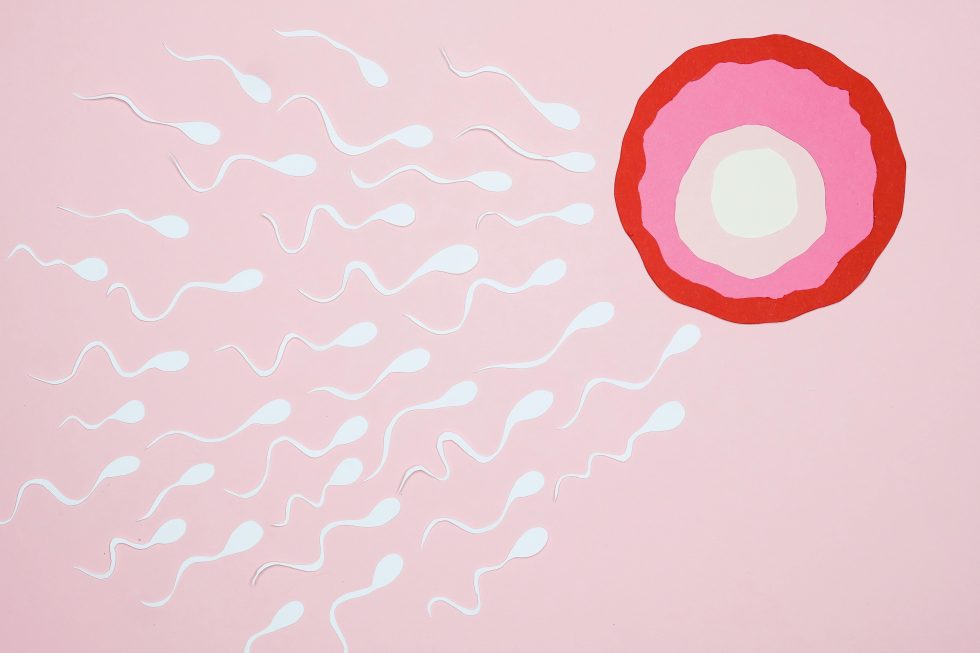When it comes to fertility, the role of age is often discussed in relation to women, but the age of men also plays a significant role in reproductive health. One important factor affected by aging in men is sperm morphology—the size, shape, and structure of sperm. Sperm morphology is a key determinant of male fertility, as abnormal sperm shape can impact a sperm’s ability to fertilize an egg.

In this blog, we’ll explore what sperm morphology is, how it changes as men age, and the potential effects on fertility.
What is Sperm Morphology?
Sperm morphology refers to the size and shape of sperm cells. A sperm cell has three main parts:
Head: This contains the genetic material (DNA) and is crucial for fertilization.
Midpiece: This section provides the energy needed for the sperm to swim toward the egg.
Tail: The tail propels the sperm forward and allows it to reach the egg for fertilization.
Healthy sperm typically have an oval-shaped head, a well-defined midpiece, and a long, straight tail. When sperm cells deviate from this normal structure, it is referred to as abnormal sperm morphology. Abnormalities can include misshapen heads, double tails, or unusually large or small sperm cells.
Sperm morphology is an essential component of male fertility. While some level of abnormality is normal, a high percentage of abnormally shaped sperm can reduce the chances of successful fertilization.
How Does Sperm Morphology Change as Men Age?
As men age, changes in sperm production and quality occur, and sperm morphology can be affected in several ways. These changes usually start to become more significant after the age of 40.
Here are some key ways that sperm morphology changes with age:
1. Increase in Abnormal Sperm Forms
– Research shows that the percentage of sperm with abnormal morphology tends to increase as men age. These abnormalities can include larger or smaller sperm heads, irregular shapes, or defective tails. Sperm with misshapen heads, for example, may have difficulty penetrating the egg, reducing the chances of successful fertilization.
One study found that men aged 40 and older tend to have higher rates of sperm with head defects compared to younger men. As the number of abnormal sperm rises, the overall quality of the sperm sample declines, making it harder to achieve pregnancy naturally.
2. Decline in Overall Sperm Quality
In addition to changes in morphology, sperm quality as a whole declines with age. This includes decreases in sperm count (the number of sperm produced) and sperm motility (the sperm’s ability to swim). These factors combined with abnormal morphology can significantly impair fertility in older men.
3. DNA Fragmentation in Sperm
– Aging is also associated with increased DNA fragmentation in sperm. This refers to damage to the genetic material within the sperm, which can lead to issues with embryo development, implantation, and even increased rates of miscarriage. Abnormally shaped sperm are more likely to carry fragmented DNA, compounding the negative effects on fertility.
4. Changes in Sperm Production
As men age, there can also be a gradual decline in the efficiency of sperm production in the testicles. This can lead to a higher proportion of defective sperm being produced. Hormonal changes, such as reduced levels of testosterone, can contribute to these shifts in sperm production and quality.
Impact of Abnormal Sperm Morphology on Fertility
While it’s normal for men to have some degree of abnormal sperm morphology, higher levels of abnormalities can affect a man’s fertility in the following ways:
1. Reduced Ability to Fertilize an Egg
– Abnormally shaped sperm may struggle to reach and penetrate an egg. For example, sperm with defects in the head may be unable to successfully bind to or penetrate the egg’s outer layer, reducing the likelihood of fertilization. This can make it harder for couples to conceive naturally.
2. Increased Time to Conception
– Men with higher rates of abnormal sperm morphology may experience longer times to conception compared to men with normal sperm morphology. Even if the sperm count and motility are within normal ranges, poor sperm morphology can lead to reduced fertility and prolong the time it takes to conceive.
3. Higher Risk of Miscarriage
– Studies suggest that increased DNA fragmentation in sperm, which is often associated with abnormal morphology and aging, can contribute to a higher risk of miscarriage. If sperm with fragmented DNA fertilizes an egg, it may lead to genetic abnormalities in the embryo, increasing the likelihood of miscarriage.
4. Challenges with Assisted Reproductive Technologies (ART)
Sperm morphology also plays a role in the success of assisted reproductive technologies such as in-vitro fertilization (IVF). In cases of severe abnormal morphology, even advanced fertility treatments like IVF or intracytoplasmic sperm injection (ICSI) may be less effective. While ICSI involves injecting a single sperm directly into an egg, abnormal sperm may still have difficulty achieving successful fertilization or creating a viable embryo.
Can Sperm Morphology Be Improved?
While age-related changes in sperm morphology are inevitable to some extent, certain lifestyle changes can improve overall sperm health and potentially mitigate some of the effects of aging. Here are some ways men can promote better sperm quality:
1. Maintain a Healthy Diet
A diet rich in antioxidants, such as vitamins C and E, zinc, and folic acid, can help protect sperm from oxidative stress, which is linked to sperm abnormalities. Eating plenty of fruits, vegetables, whole grains, and healthy fats can support better reproductive health.
2. Exercise Regularly
Regular physical activity promotes healthy testosterone levels and can improve sperm quality. However, it’s important to avoid excessive or extreme exercise, as this can have the opposite effect on fertility.
3. Quit Smoking and Limit Alcohol
Smoking and excessive alcohol consumption are known to negatively affect sperm morphology and overall sperm quality. Quitting smoking and reducing alcohol intake can lead to improvements in sperm health over time.
4. Reduce Exposure to Environmental Toxins
Exposure to environmental toxins, such as pesticides, heavy metals, and industrial chemicals, can contribute to poor sperm morphology and fertility issues. Minimizing exposure to harmful chemicals at home and in the workplace can help protect reproductive health.
5. Manage Stress
Chronic stress can impact hormone levels, including testosterone, and contribute to poor sperm quality. Finding ways to manage stress through relaxation techniques, exercise, or mindfulness can support better sperm health.
6. Consider Antioxidant Supplements
Some studies suggest that taking antioxidant supplements may help improve sperm morphology and reduce DNA fragmentation in sperm. However, it’s important to consult with a healthcare provider before starting any new supplements.
Sperm morphology is a critical factor in male fertility, and it changes as men age. While age-related declines in sperm quality are inevitable, men can take proactive steps to maintain healthy sperm through lifestyle choices such as a balanced diet, regular exercise, and minimizing exposure to harmful substances.
For men over 40, understanding the impact of age on sperm health is important when planning to conceive. If fertility issues arise, seeking help from a fertility specialist https://mfcfamily.com/ can provide valuable insights and access to treatments like IVF or ICSI, which can help overcome some of the challenges associated with abnormal sperm morphology.
